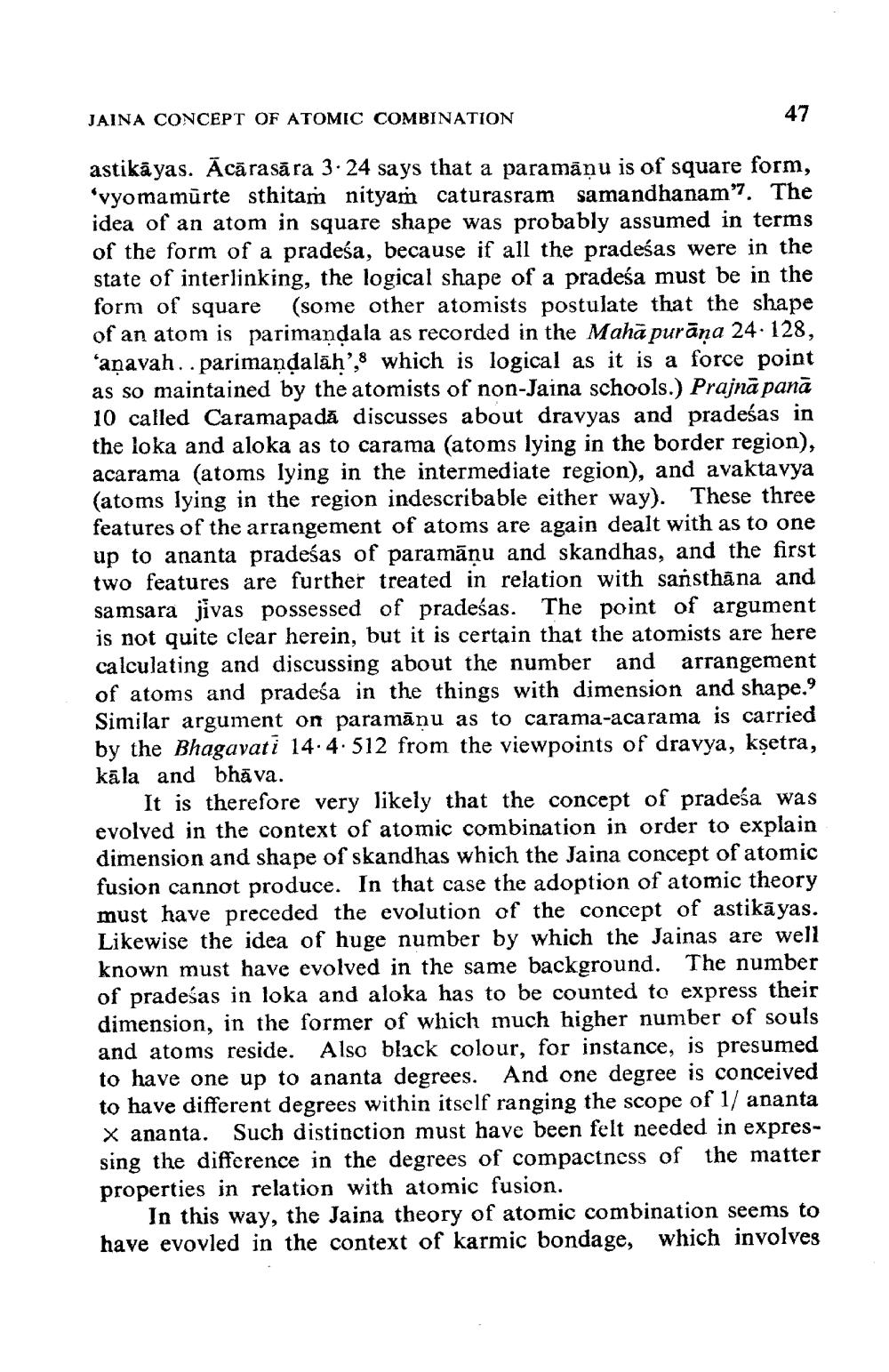________________
JAINA CONCEPT OF ATOMIC COMBINATION
astikāyas. Ācārasā ra 3.24 says that a paramānu is of square form, "vyomamurte sthitam nityam caturasram samandhanam'7. The idea of an atom in square shape was probably assumed in terms of the form of a pradeśa, because if all the pradeśas were in the state of interlinking, the logical shape of a pradeśa must be in the form of square (some other atomists postulate that the shape of an atom is parimandala as recorded in the Mahā purāna 24. 128. 'anavah. . parimandalāh,which is logical as it is a force point as so maintained by the atomists of non-Jaina schools.) Prajnā panā 10 called Caramapadă discusses about dravyas and pradeśas in the loka and aloka as to carama (atoms lying in the border region), acarama (atoms lying in the intermediate region), and avaktavya (atoms lying in the region indescribable either way). These three features of the arrangement of atoms are again dealt with as to one up to ananta pradeśas of paramāņu and skandhas, and the first wo features are further treated in relation with sansthāna and samsara jivas possessed of pradeśas. The point of argument is not quite clear herein, but it is certain that the atomists are here calculating and discussing about the number and arrangement of atoms and pradeśa in the things with dimension and shape. Similar argument on paramānu as to carama-acarama is carried by the Bhagavati 14.4: 512 from the viewpoints of dravya, kşetra, kāla and bhāva.
It is therefore very likely that the concept of pradeśa was evolved in the context of atomic combination in order to explain dimension and shape of skandhas which the Jaina concept of atomic fusion cannot produce. In that case the adoption of atomic theory must have preceded the evolution of the concept of astikāyas. Likewise the idea of huge number by which the Jainas are well known must have evolved in the same background. The number of pradeśas in loka and aloka has to be counted to express their dimension, in the former of which much higher number of souls and atoms reside. Also black colour, for instance, is presumed to have one up to ananta degrees. And one degree is conceived to have different degrees within itself ranging the scope of 1/ ananta x ananta. Such distinction must have been felt needed in expressing the difference in the degrees of compactness of the matter properties in relation with atomic fusion.
In this way, the Jaina theory of atomic combination seems to have evovled in the context of karmic bondage, which involves




